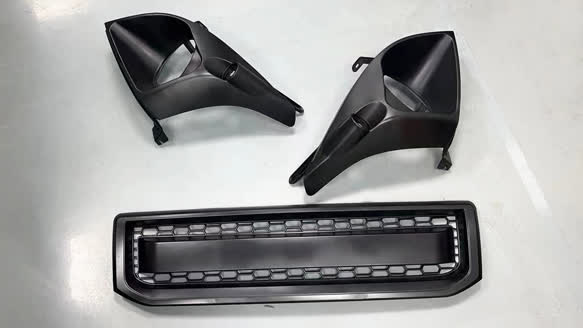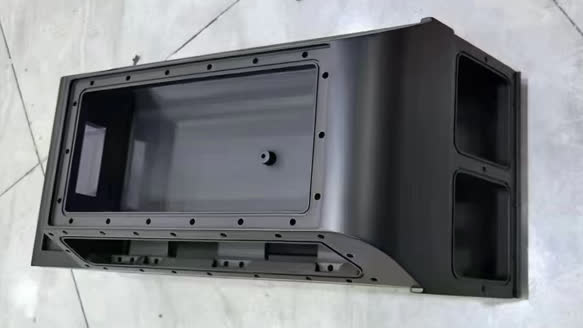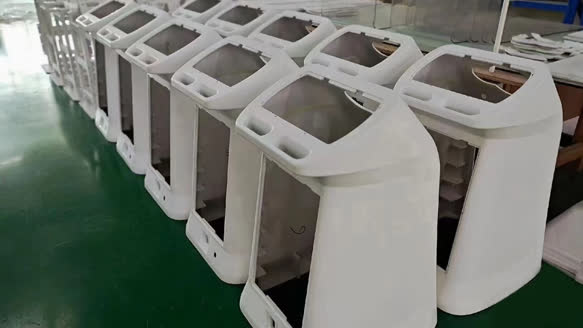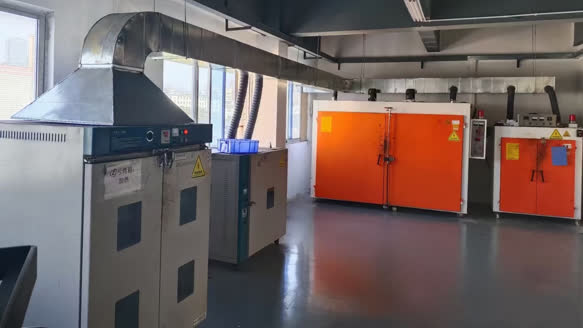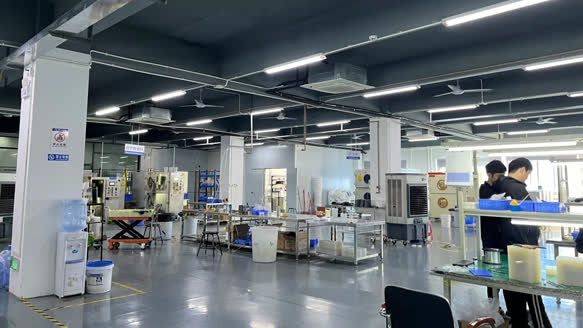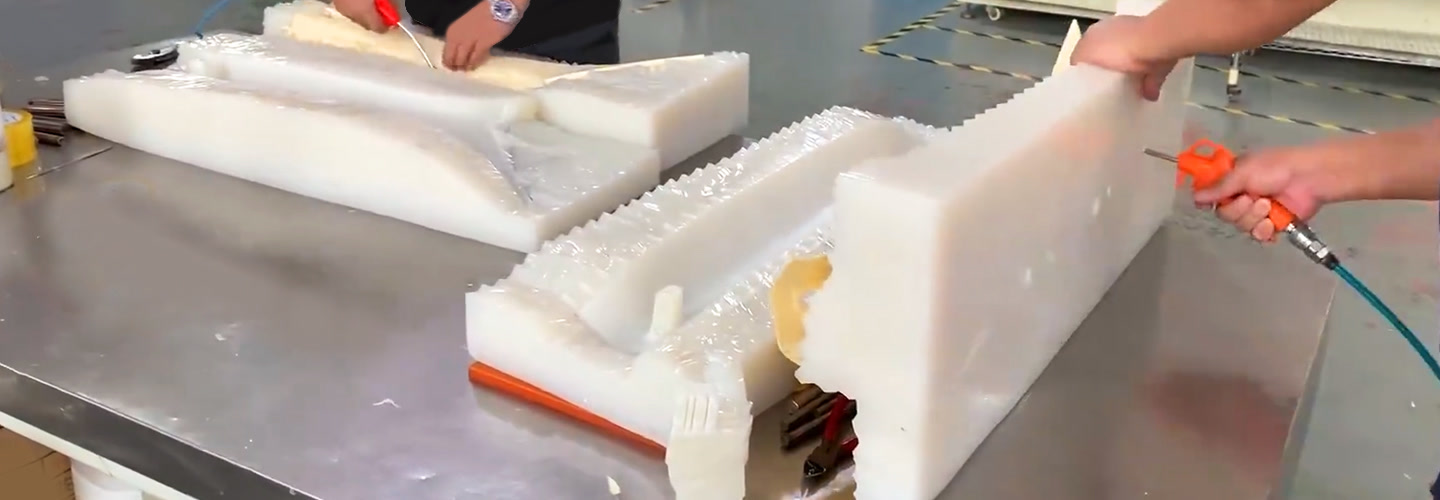
Replicates master patterns with silicone molds to produce 20-500 polyurethane/ABS parts for functional testing. Simulates injection-molded quality for consumer electronics casings, automotive interior prototypes, and pre-production validation at 60% lower cost than steel tooling.
Vacuum Casting Service
From a Single Part to Over 50pcs Production
Polyurethane vacuum casting uses pourable resins and economical silicone molds to produce high-fidelity copies of master patterns. This process saves time and money while producing parts that are of the same quality as plastic injection molding.
Advantages Of Vacuum Casting
Vacuum casting offers a low-cost solution for mold creation, making it an economical choice for small production runs.
The quick fabrication process allows molds to be ready in just a few days, significantly speeding up production timelines.
With a wide variety of polyurethane resins available, including options for overmolding, vacuum casting meets diverse material needs.
Cast copies exhibit high accuracy and feature excellent surface texture, ensuring quality matches the original design.
Molds used in vacuum casting are durable enough to produce 20 or more copies, offering good value for medium-scale production demands. 6.Ideal for producing engineering models, samples, rapid prototypes, and bridging to full production, it's a versatile manufacturing option.
When to Use Vacuum Casting?
Use vacuum casting when you need a small number of high-quality plastic parts, typically between 10 to 20 pieces, without the long wait and high cost of making injection molds. This method is ideal for creating prototypes and display models, supporting crowdfunding or trade show presentations, and testing new designs for fit and function. It also serves as a bridge to larger production runs. In some cases, vacuum casting can produce final-use parts, as the casting resins can match the performance of materials like ABS, Nylon, PP, acrylic, and soft TPE rubber.
Vacuum Casting Materials
We use two-part resins for vacuum casting. We mix these resins just before pouring them into the silicone mold. They look and perform similarly to common plastic injection molding materials. Yes Prototype can replicate materials like polypropylene, ABS, nylon, acrylic, and different soft elastomer hardnesses. For added stiffness in ABS and nylon, we can include glass fibers, providing more design choices.
Vacuum Casting Tolerances
The final dimensions of vacuum cast parts depend on the accuracy of the master pattern, the part's geometry, and the type of casting material used. Typically, a shrinkage rate of about 0.15% can be expected.
Why Choose Yes Prototype for Vacuum Casting Services?
Exceptional Quality and Speed
With our broad experience, advanced equipment, and technologies, we deliver high-quality vacuum casting services in quick turnaround times, typically within 7 to 14 days.
Comprehensive Services
We offer a comprehensive solution for creating master patterns and cast copies based on your CAD designs. This includes producing high-quality molds, along with a range of finishing services such as painting, sanding, pad printing, media blasting, and machining, as well as light assembly to meet your specific needs.
Design for Manufacturing Support (DFM)
As vacuum casting is typically used for rapid prototyping, we provide detailed Design for Manufacturing (DFM) analysis to spport your final production. Additionally, we offer video files of all production steps as needed.
Material Quality Assurance
To ensure your products are reliable and of high quality, we use top-grade resins and follow a strict quality control process. This includes thorough verification and testing of material properties, performance, and durability. During production, we carefully control temperature, humidity, and other conditions to ensure consistency in every part.
Expert Team Services
Our experienced team delivers excellent vacuum casting for prototypes and end-use parts, with thorough finishing and quality inspection. We offer competitive pricing, no minimum order requirements, and quotes within 48 hours.
Vacuum Casting Process
Polyurethane vacuum cast parts are made in three steps: create the master pattern, create the molds, and cast the pieces.
Step 1 : Master Patterns
Patterns are 3D solids created from your CAD designs, usually by 3D plastic printing (such as SLA/SLS) or CNC machining. We can make the patterns for you, or you may supply your own. These patterns must be able to withstand temperatures up to 40°C.
The master pattern can be any physical model of your design. It can be created using various methods, with 3D printing and CNC machining being common choices. 3D printing offers greater design flexibility but has a rougher surface finish. In comparison, CNC machining offers smoother surfaces but cannot achieve very sharp corners.
Step 2 : Casting Molds
Molds are made from liquid silicone. First, the pattern is sanded and sealed with primer. It's then placed in a casting box, and liquid silicone is poured around it. After curing for 12 to 24 hours in an oven, the mold is carefully cut open, leaving a sawtooth pattern on the cutline to act as a key for resealing. The master pattern is removed, leaving a cavity matching the original shape. Finally, the mold is taped and stapled shut to prevent leakage during resin pouring.
Step 3 : Casting Copies
Pour your chosen casting resin into the mold's cavity to create an accurate copy of the original. You can even use multiple materials for overmolding. Each silicone mold can usually produce around 20 copies of the master pattern.
Limitations of Vacuum Casting
Vacuum casting has some limitations. To ensure the part can be easily removed, good design practices are necessary, including sufficient draft angles. Avoid undercuts, deep ribs, bosses, and other features that could damage the relatively soft silicone mold when opening it.
Key Benefits of Vacuum Casting for Rapid Prototypes
Surface Quality
After carefully preparing the master patterns, we can accurately reproduce even the finest surface details from the original. The finished copies can be painted, printed, or machined to enhance their appearance and functionality. This results in high-fidelity replicas that match the quality of plastic injection-molded parts.
Quick Delivery Times
Creating mass production tools from steel can take several weeks, whereas vacuum casting allows for parts to be ready and delivered in just a few days, depending on the part size and quality. This makes it an ideal choice when you’re under a tight deadline, such as preparing display models for a trade show or launching a crowdfunding campaign.
Variety Customization Options
Vacuum casting uses a wide range of resins that can mimic the appearance, texture, and mechanical properties of common materials like nylon, ABS, or polyethylene. This ensures you don’t have to compromise on functionality for the sake of speed or convenience. Additionally, different types of urethane can be overmolded to create various surface textures and hardness levels within a single part, offering even more customization options.
Cost-Effectiveness
Once the master designs are ready, vacuum casting is the most cost-effective method for producing high-quality duplicates. It not only consumes less electricity compared to injection molding, die casting, or CNC machining, but also provides substantial savings in tooling, materials, energy, and labor costs. These savings can be reinvested into further product development or alternative design iterations.
Request Your Vacuum Casting Quote Today
After receiving your 3D drawings, our engineers will analyze your custom parts immediately. We’ll work closely with you to clarify all details before providing a quote that is both economical and accurate.


